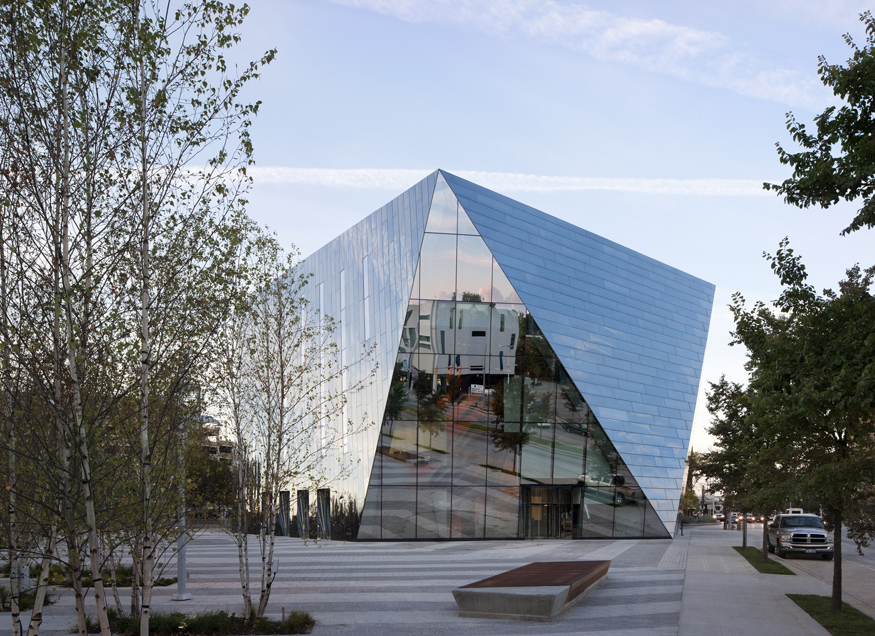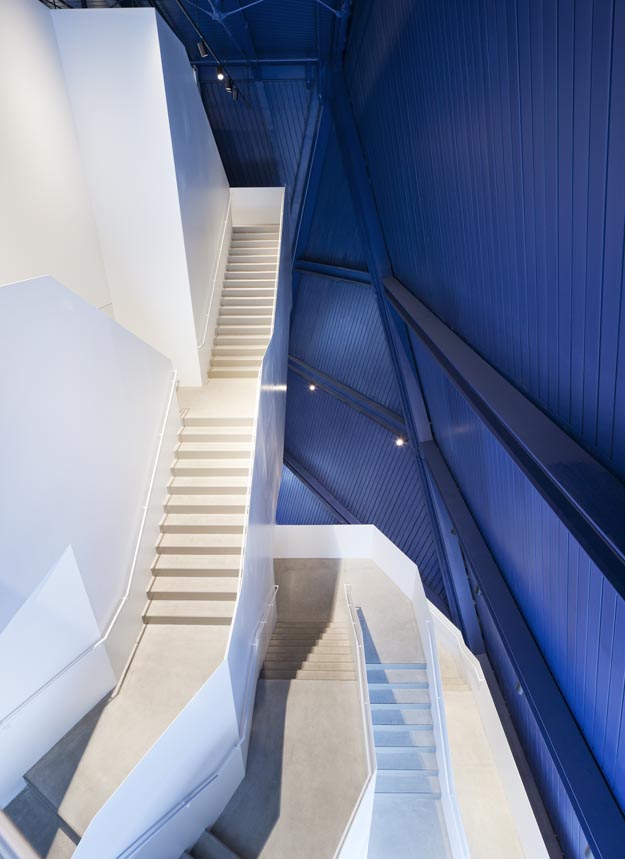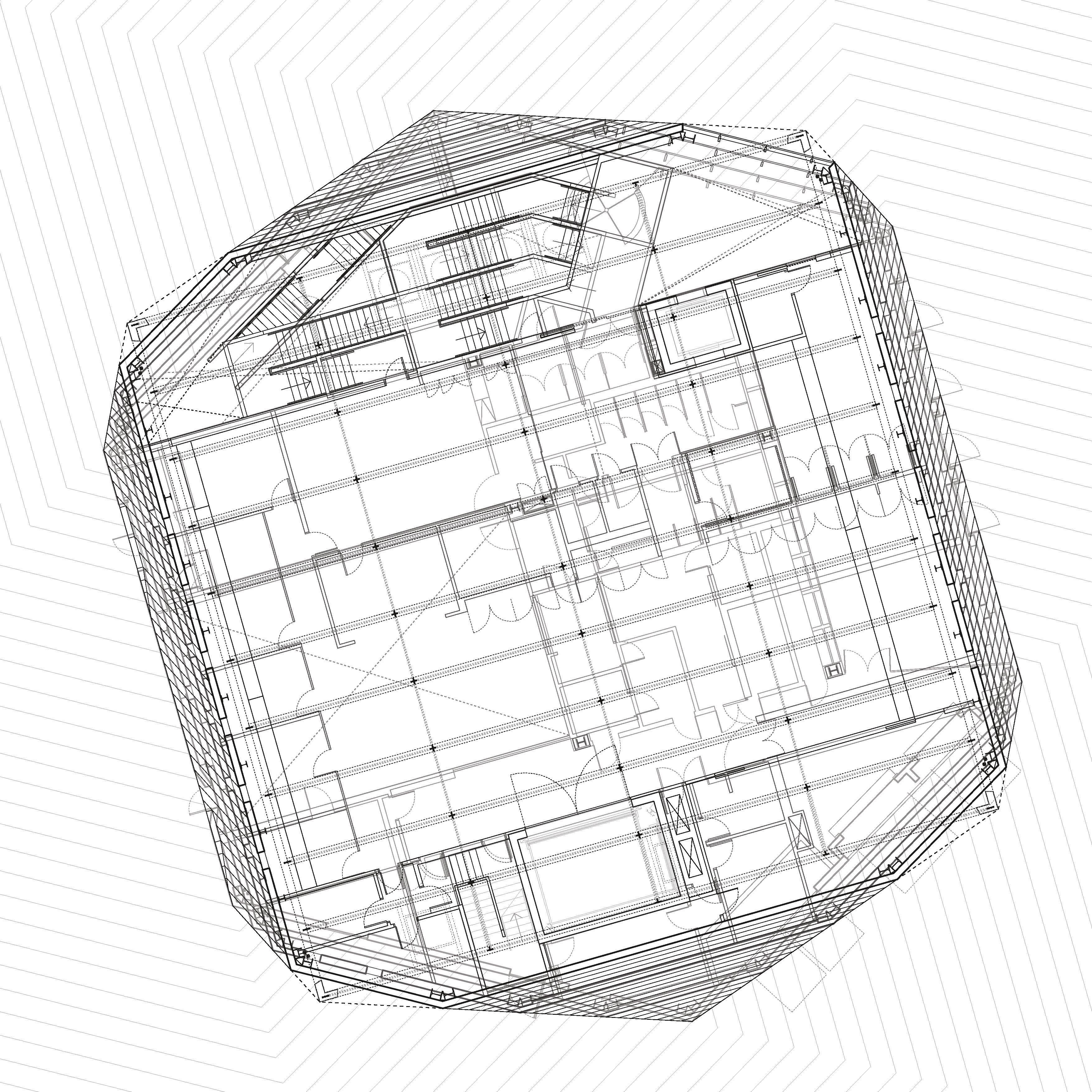MOCA
MOCA Cleveland is a contemporary art museum designed to serve as a public ‘living room’ in a cosmopolitan Cleveland neighborhood, and to act as a catalyst for creativity and growth for the city. Its twisting architectural form shifts from a compact hexagonal base to a rectangular roof, creating a new public plaza, a soaring atrium and a dynamic double-decker staircase.
Located at a busy intersection on a triangular site, the building anchors Cleveland’s Uptown District, which is home to one of the country's largest concentrations of cultural, educational and medical institutions. Its mirror-finish black stainless steel envelope reflects the urban surroundings, changing in appearance with differences in light and weather. The building is an active agent in the relationship between the institution, the public and to the city: its envelope incorporates entrances on all sides that provide access to its entire perimeter. Three of the building’s six facets, one of them clad in transparent glass, flank a new public plaza which serves as a public gathering place and links MOCA to Uptown attractions and amenities, including the expanded Cleveland Institute of Art and new commercial space and residential units.
As a non-collecting institution, MOCA Cleveland has a constantly changing exhibition and public program. The building is designed to be generous and inclusive so that even if visitors do not pay to visit a temporary exhibition on the fourth floor, they can experience a variety of displays and events on the first three floors. Spaces are flexible and arranged to allow movement between galleries and events to enable the museum to display works in a great variety of media and genres.
Upon entering the atrium visitors can see the dynamic shape and structure of the building as it rises through four storeys. This view draws the eye towards the primary exhibition space on the top floor, encouraging visitors to explore the displays and events on the first three floors. The atrium leads to a lobby, cafe and shop, and to a double-height multi-purpose room. A grand, ‘double-decker’ staircase inverts the typical linearity of stairs by providing ten different ways to ascend, connecting the floors and reflecting the importance of transience and flexibility. An enclosed, descending egress stair doubles up as a sound gallery and is entirely painted yellow to transcend the boundaries of vision. Ascending from the atrium, the upper levels reveal themselves slowly: the stair leans forward as it climbs following the profile of the building, wide landings provide social spaces and the open route plays out as a panorama.
On the top floor the primary 6,000ft² gallery space can be sub-divided for a wide range of art works and media. Here and throughout the building ‘switch elements’ are incorporated – such as moveable walls, glass walls and guillotine walls – so that the spaces can be configured for a variety of uses. ‘Micro-agents’ also allow the building to work hard: for example, display counters in the museum store have wheels so that they can be recessed into the wall to open up the space for events.
An intense shade of blue fire-resistant paint covers the museum’s interior surfaces creating a sense of boundlessness, which suggests the sky or sea and places emphasis on the works of art. The geometry, form and reflective/absorptive surfaces of the building provide multiple perceptions of the museum, and echo its shifting program that is at once individual, collective, infinite, an exhibition and a place of production.




